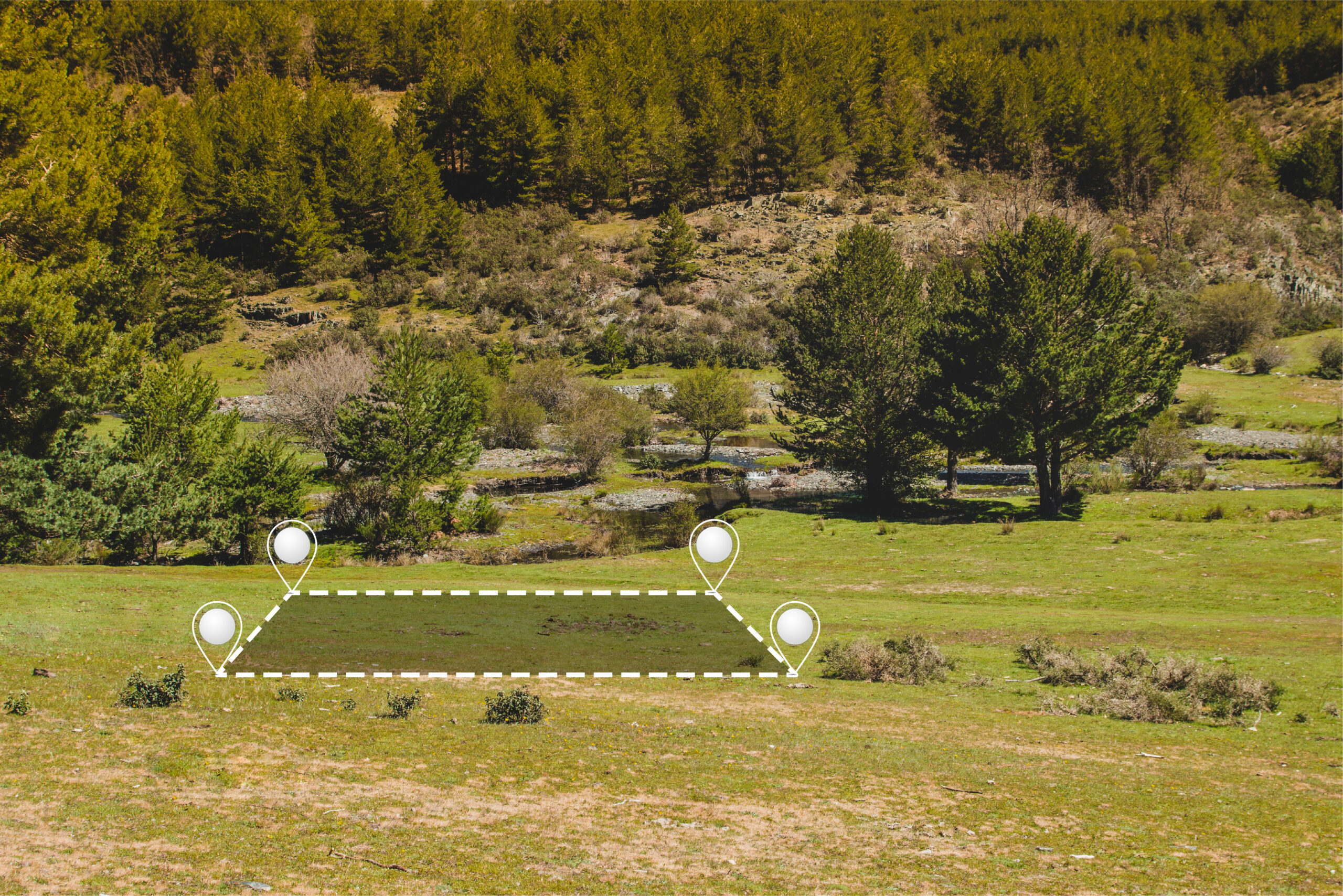I. Introduction
Property ownership comes with a multitude of rights and responsibilities, but nestled within the legal landscape are often overlooked and misunderstood elements known as easements. In this blog post, we’ll explore the intricacies of property easements, shedding light on their definition, creation, and the legal complexities that can arise. Whether you’re a property owner or a potential buyer, understanding easements is crucial for navigating the legal maze that surrounds real estate transactions.
II. What is a Property Easement?
A property easement is a legal right that grants someone the use of another person’s land for a specific purpose. This access may involve a range of activities, from the construction of utility lines to the right of passage. There are various types of easements, each serving distinct purposes in the realm of property law.
Easements can be broadly classified into affirmative and negative easements. Affirmative easements grant the holder the right to do something on the servient property, like installing a sewer line or accessing a driveway. On the other hand, negative easements restrict the property owner from doing something on their land, such as blocking a scenic view.
Within these categories, easements can also be classified as appurtenant or gross. An appurtenant easement benefits a particular piece of land, often tied to the ownership of a neighboring property. Meanwhile, a gross easement is not tied to the ownership of any particular property and may be granted to an individual or entity.
III. How Easements Are Created
Understanding how easements are created is essential for property owners and buyers alike. Easements can be created voluntarily through a written agreement between the parties involved. This is often the case when a property owner grants an easement to a utility company or a neighbor.
In some situations, easements are created out of necessity. For example, if a landlocked property has no other means of access, an easement by necessity may be granted to ensure that the owner can reach their land.
Easements can also be established through prescription, where someone gains the right to use another’s land through continuous and open use over a specified period. Additionally, easements by implication may arise when a court determines that the parties intended for an easement to exist based on the circumstances.
IV. Common Types of Easements
- Utility Easements: Utility easements are among the most common and are granted to utility companies for the installation and maintenance of power lines, water pipes, or other essential services. These easements ensure that these services can be provided efficiently, often at the expense of the property owner’s exclusive use of that portion of the land.
- Right of Way Easements: Right of way easements provides a person or entity with the legal right to pass through another’s property. This type of easement is crucial for ensuring access to landlocked properties and facilitating convenient routes for utilities or transportation.
- Conservation Easements: Conservation easements are a unique category designed to protect natural resources and wildlife habitats. Property owners may voluntarily restrict certain uses of their land to preserve its ecological value, often in exchange for tax benefits.
- Drainage Easements: These easements grant the right to manage water runoff and drainage through a specific area. They are crucial for preventing flooding and water damage, and often involve the installation of drainage systems.
- Access Easements: Access easements provide individuals or entities with the right to enter another’s property for specific purposes. This could include crossing a property to reach a public road or accessing a shared driveway.
V. Legal Rights and Responsibilities
Understanding the rights and responsibilities associated with easements is fundamental for both the grantor (the property owner granting the easement) and the grantee (the person or entity receiving the easement).
- Rights of the Easement Holder: Easement holders have specific rights outlined in the easement agreement. These rights could include the right to use a portion of the property for a designated purpose, such as laying utility lines or accessing a shared driveway. It’s crucial for property owners to clearly understand and define these rights when creating an easement agreement.
- Responsibilities of the Property Owner: While the property owner retains ownership of the land, they are obligated to allow the easement holder to exercise their granted rights. This might involve refraining from obstructing the easement or interfering with the activities specified in the agreement. Property owners should be aware of these responsibilities to avoid legal complications.
- Restrictions on the Use of the Servient Property: The property subject to the easement, known as the servient property, may face restrictions on certain uses. For example, a property owner with a conservation easement may be limited in the types of development or alterations they can make to the land. It’s essential to carefully review and understand these restrictions to avoid legal disputes.
VI. Navigating Legal Complexities
Navigating the legal complexities of property easements requires a proactive approach and, in many cases, the guidance of legal professionals. Here are some steps property owners and potential buyers can take to navigate these complexities:
- Hiring a Real Estate Attorney: One of the most effective ways to navigate legal complexities related to easements is to consult with a qualified real estate attorney. An experienced attorney can review property records, draft or review easement agreements, and provide valuable legal advice to protect the interests of all parties involved.
- Conducting a Property Title Search: Before purchasing a property, it’s essential to conduct a thorough property title search. This search will reveal existing easements, restrictions, and any other encumbrances on the property. Understanding these elements upfront can prevent surprises and help buyers make informed decisions.
- Understanding the Terms of the Easement Agreement: Easement agreements can be complex legal documents. It’s crucial for property owners and easement holders to thoroughly understand the terms and conditions outlined in these agreements. This includes the specific rights granted, any limitations on land use, and the duration of the easement.
- Resolving Disputes and Conflicts: Disputes can arise over the interpretation or enforcement of easement agreements. In such cases, it’s important to explore alternative dispute resolution methods, such as mediation or arbitration, before resorting to litigation. Open communication and a willingness to find mutually beneficial solutions can help avoid prolonged legal battles.
VII. Case Studies
To illustrate the real-world impact of property easements and the legal complexities that may arise, let’s explore a few case studies:
- The Battle Over Scenic Views: In a picturesque neighborhood, property owners found themselves in a legal dispute over a negative easement. Homeowners who enjoyed breathtaking views of the surrounding landscape were at odds with a developer who planned to build structures that would obstruct those views. The case raised questions about the enforceability of negative easements and the balance between property rights and development interests.
- Utility Easements and Home Values: A community faced challenges when a utility company sought to install high-voltage power lines through residential properties. Homeowners were concerned about the potential impact on property values and health risks associated with electromagnetic fields. This case highlighted the need for transparent communication, community engagement, and the consideration of property values in utility easement negotiations.
VIII. Tips for Property Owners
Property owners can take proactive steps to safeguard their interests and navigate easement-related complexities effectively. Here are some practical tips:
- Conducting Due Diligence Before Purchasing Property: Before purchasing a property, conduct thorough due diligence to identify existing easements, restrictions, and potential issues. This includes reviewing property records, survey reports, and obtaining information from local authorities.
- Negotiating Easement Terms: If you find yourself in a position where you need to grant an easement, negotiate the terms carefully. Work with legal professionals to ensure that the agreement protects your property interests while meeting the needs of the easement holder.
- Regularly Reviewing Property Records: Property values and land use regulations can change over time. Regularly reviewing property records can help property owners stay informed about any new easements, zoning changes, or other developments that may affect their property rights.
IX. Future Trends in Property Easements
As technology and societal priorities evolve, so too do trends in property easements. Here are some emerging issues and trends to keep an eye on:
- Blockchain and Property Rights: The use of blockchain technology in real estate transactions and property rights management is gaining traction. Blockchain can provide a secure and transparent way to record and transfer property easements, reducing the risk of fraud and disputes.
- Smart Easements: With the rise of smart cities and connected infrastructure, there’s a growing interest in “smart easements.” These easements may involve granting access for the installation and maintenance of technology-related infrastructure, such as sensors, cameras, and communication networks.
- Environmental Easements and Climate Change: As concerns about climate change intensify, there is an increased focus on environmental easements aimed at preserving natural habitats and mitigating the impact of development on ecosystems. Property owners may encounter new restrictions and requirements related to environmental conservation.
X. Conclusion
In conclusion, property easements are a nuanced aspect of real estate law that requires careful consideration and understanding. Whether you’re a property owner, potential buyer, or involved in a real estate transaction, being aware of the different types of easements, how they are created, and the associated legal rights and responsibilities is crucial for avoiding disputes and ensuring a smooth property ownership experience.
By navigating the legal complexities with diligence, seeking professional advice when needed, and staying informed about emerging trends, individuals can protect their property interests in an ever-changing real estate landscape. Remember, knowledge is the key to empowerment in the realm of property easements, and this understanding can be the foundation for harmonious coexistence between property owners and easement holders in the dynamic world of real estate.




